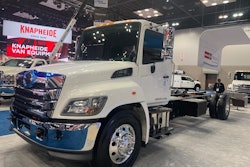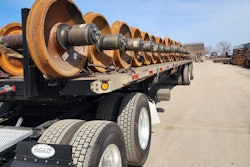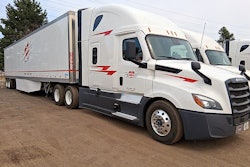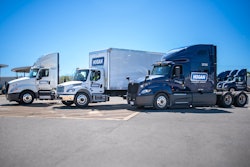
There’s an opportunity for carriers who can navigate the complexities in cross-border operations in Mexico.
Companies continue shifting production to Mexico to capture USMCA benefits, according to Uber Freight’s Q3 Market Update report.
Automotive, electronics, and pharmaceutical sectors are leading the expansion as manufacturers are prioritizing proximity to U.S. markets and tariff advantages, said Mazen Danaf, senior economist at Uber Freight.
Recent U.S. trade actions, however, have begun impacting export volumes in key categories like automotive components.
Despite tariff policy uncertainties, the Mexico nearshoring trend is driven by factors that ensure long-term sustainability.
“Companies are prioritizing proximity to mitigate risks from global disruptions and geopolitical tensions, while also gaining a competitive advantage in speed-to-market for products entering the U.S. consumer base,” said Justin Danks, vice president of operations at Sunset Transportation.
Foreign direct investment in Mexico emphasizes the depth of this growth, said Jordan Dewart, President of Redwood Mexico.
According to the World Bank Group, Mexico attracted $45.33 billion in net FDI inflows in 2024.
“A lot of this is tied to nearshoring. Global brands want to shorten their supply chains and reduce exposure to Asia,” Dewart said, adding that the strongest investment comes from the U.S., though Europe and Asia (specifically Germany, Japan, and China) are also investing heavily in automotive, electronics, and logistics infrastructure.
“We see that every week in the form of new facility openings and increased freight volumes in manufacturing zones that didn’t exist several years ago,” Dewart added. “The resiliency comes from diversification. Companies aren’t just assembling; they’re building full manufacturing ecosystems.”
Where the freight is: the Bajío corridor opportunity
According to Redwood’s Q3 2025 Cross-Border Index, the Bajío–Mexico City–Querétaro corridor is a rising manufacturing region, mirroring the growth of the U.S. Texas Triangle region of Houston, Dallas-Fort Worth, Austin, and San Antonio.
“Automotive remains dominant," Dewart said. "EV components, wire harnesses, and Tier-2 suppliers are expanding aggressively. Aerospace and fast-moving consumer goods are also picking up speed."
Its infrastructure presents an opportunity for companies. Dewart said, “The corridor’s biggest edge is connectivity. It sits at the intersection of Mexico’s most efficient highway and rail networks (north and south on highway 57) and direct access to both Pacific (Manzanillo/Lazaro Cardenas) and Gulf (Veracruz/Altamira) ports.”
Compared to some northern states, Querétaro’s infrastructure and business-friendly environment has proven to be beneficial, Dewart explained.
“It gives us proximity to suppliers, OEMs, and distribution hubs all within a few hours of key border crossings," he said.
The growing southbound market also offers significant opportunity, the report pointed out. This is driven by the expanding retail sector in Central Mexico, mostly from Walmart de México, and ongoing nearshoring trends.
“These factors are drawing more U.S. goods into Mexico, and carriers operating south of the border are actively seeking southbound shippers to achieve network balance," according to the report.
While the opportunity is substantial, Danks offered a realistic view of the growth pattern.
“The sustainability of the growth in the U.S.-Mexico cross-border volumes is high due to the fundamental shift towards a more integrated and resilient North American supply chain," he said. "This is not a fleeting trend.”
However, he cautioned that growth won’t be linear, adding that growth needs "continuous investment in infrastructure and technology and collaborative effort."














